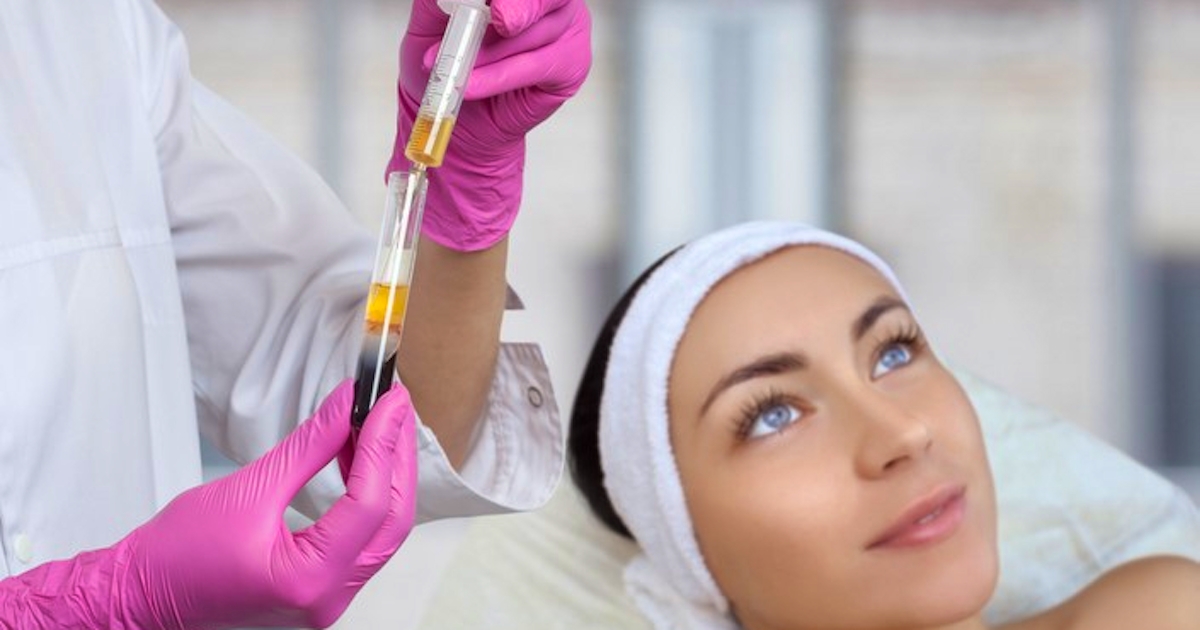
Platelet-rich plasma injection is a treatment in which a patient’s own blood is used to inject growth factors and other therapeutic proteins into the patient’s tissues. The treatment involves taking a small amount of the patient’s blood, separating out the platelets and plasma, and then injecting the concentrated platelets and plasma back into the patient. This treatment can be used for hair restoration, face treatments, and joint, muscle, ligament, and tendon pain.
Platelets, also known as thrombocytes, are small, disk-shaped cells that are found in the blood. They are important for blood clotting, as they help to stop bleeding when a blood vessel is injured. When a blood vessel is damaged, platelets aggregate at the site of the injury and form a plug to stop the bleeding. Platelets also release chemical signals that help to activate the clotting process. They are produced in the bone marrow and have a lifespan of about 10 days.
Plasma is the straw-coloured liquid portion of the blood that remains after red blood cells, white blood cells, and platelets have been removed. It is made up of water, salts, and proteins, including enzymes and antibodies. Plasma plays a number of important roles in the body, including helping to maintain the proper balance of fluids, transporting nutrients and hormones, and helping to fight infections.
PRP treatment is able to stimulate healing in muscles, joints, ligaments, and tendons by injecting concentrated growth factors and therapeutic proteins into the affected area. The platelets in PRP contain proteins called growth factors, which are responsible for initiating the healing process in the body. When PRP is injected into a muscle, joint, ligament, or tendon, the growth factors stimulate the repair and regeneration of damaged tissues.
Evidence suggests that PRP treatment is effective in the treatment of a variety of conditions that affect the muscles, joints, ligaments, and tendons, including:
- Tendinitis: PRP can reduce inflammation and promote healing in tendons that are inflamed due to overuse or injury.
- Osteoarthritis: PRP treatment can reduce pain and improve function in patients with osteoarthritis.
- Sprains or Strains: PRP can speed up the healing process and reduce pain in patients who have sprained or strained a muscle or ligament.
H3: PRP Benefits Ligaments, Tendons, Muscles, and Joints
The growth factors concentrated in platelet-rich plasma therapy help to eliminate inflammation and pain that derives from an injury. Back pain, shoulder pain, knee pain, and elbow pain can be treated with PRP rather than opting for invasive surgery or prescription medications that simply mask the pain and do not address the root cause.
Unlike PRP, perinatal tissue therapy involves being injected by cells produced in a laboratory. Perinatal tissue is responsible for the development of heart cells, joint cells, and bone cells. Perinatal tissue treatment is a treatment used to stimulate the growth and healing of specific chronic conditions, including diabetic neuropathy, addiction, or chronic pain.
If you’ve been struggling with muscle, ligament, tendon, or joint pain and you are interested in learning more about the innovative treatment known as PRP, Oregon Medical Centers is here to guide you. Contact our compassionate team of medical professionals to discuss your unique situation and schedule your appointment for PRP today!
Our integrated medical & chiropractic treatment to help you recover as quickly as possible from your auto accident injuries.
We take care of all of the insurance headaches so you can focus on getting better. Did you know your auto accident insurance covers all of your injuries 100% upto $15,000?
If you've been in a car crash give us a call today. We have over 35 years of experience helping Oregonians that have been hurt in car accidents.